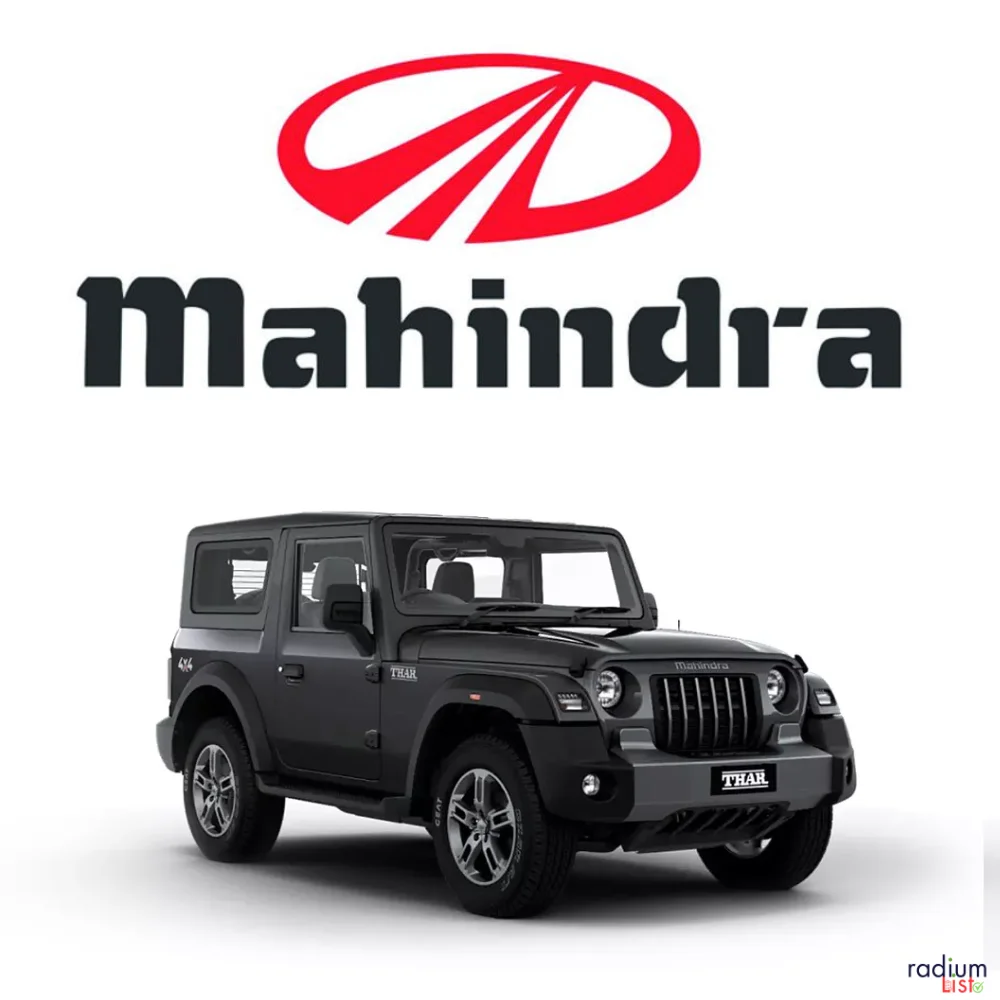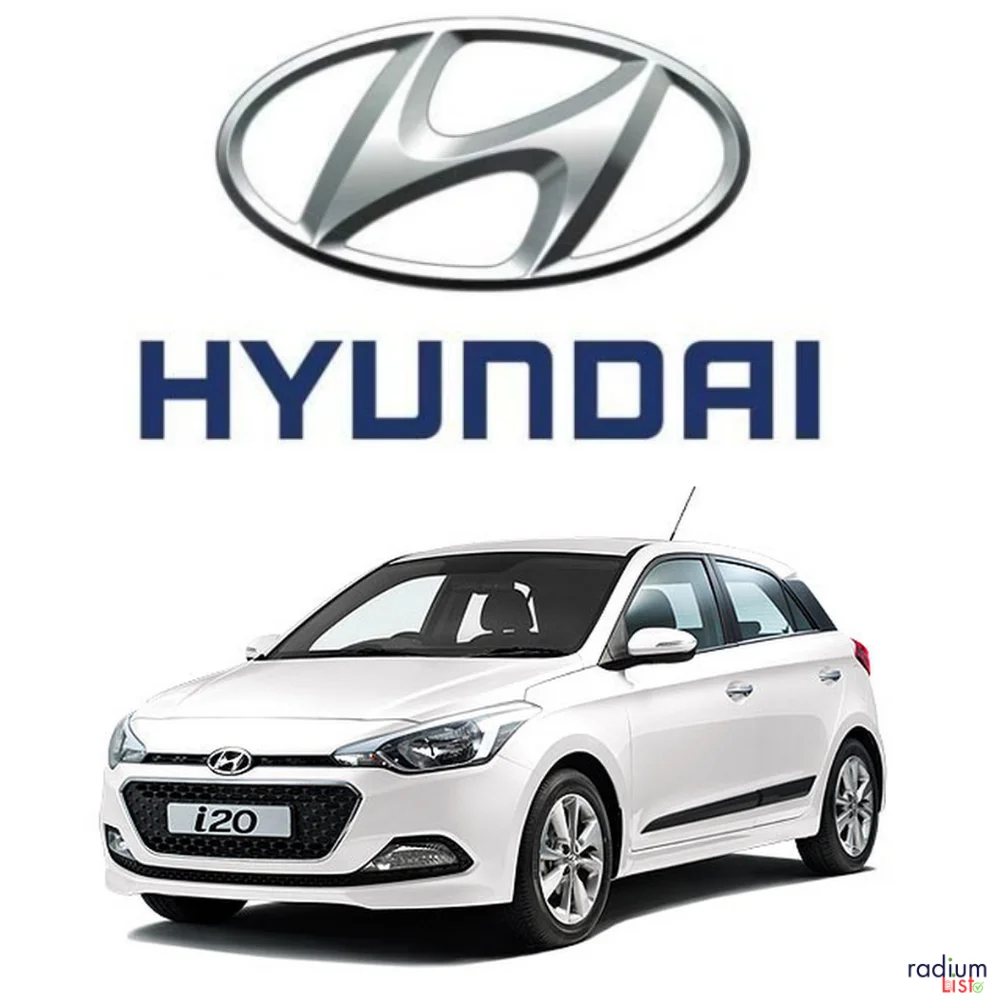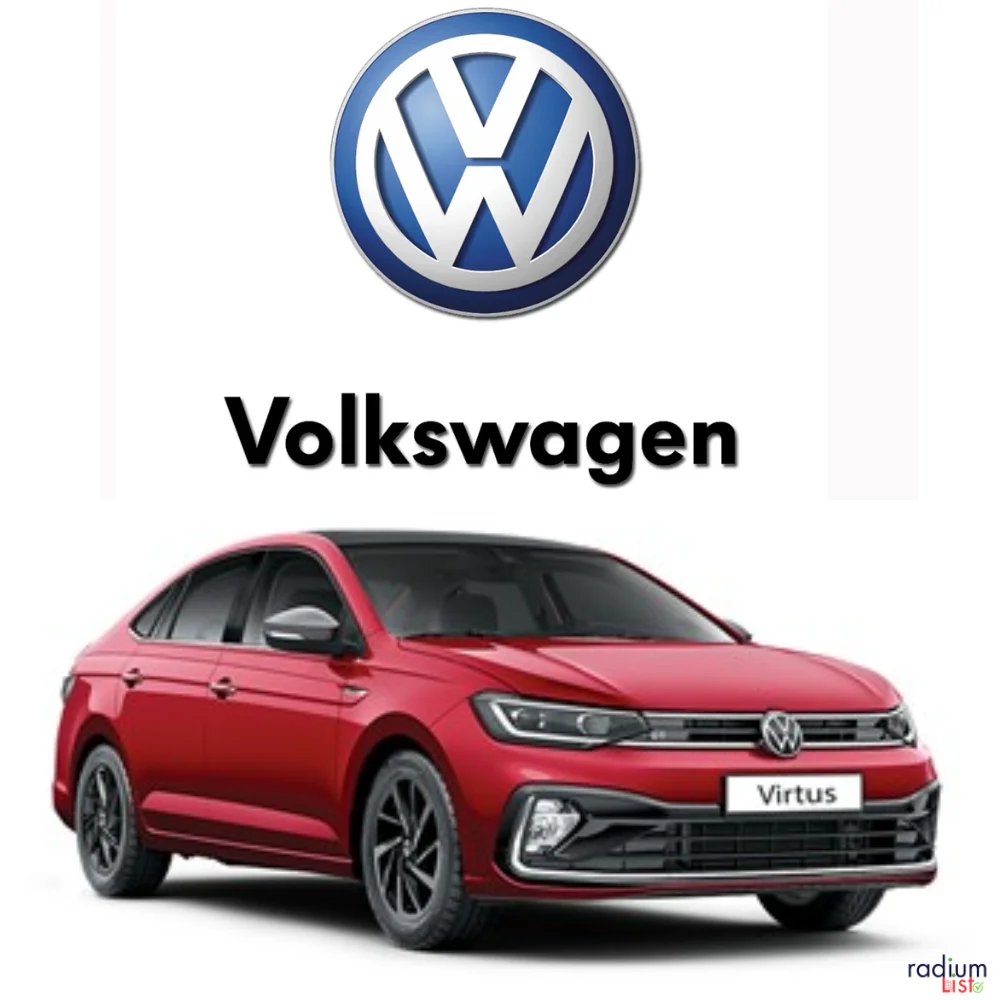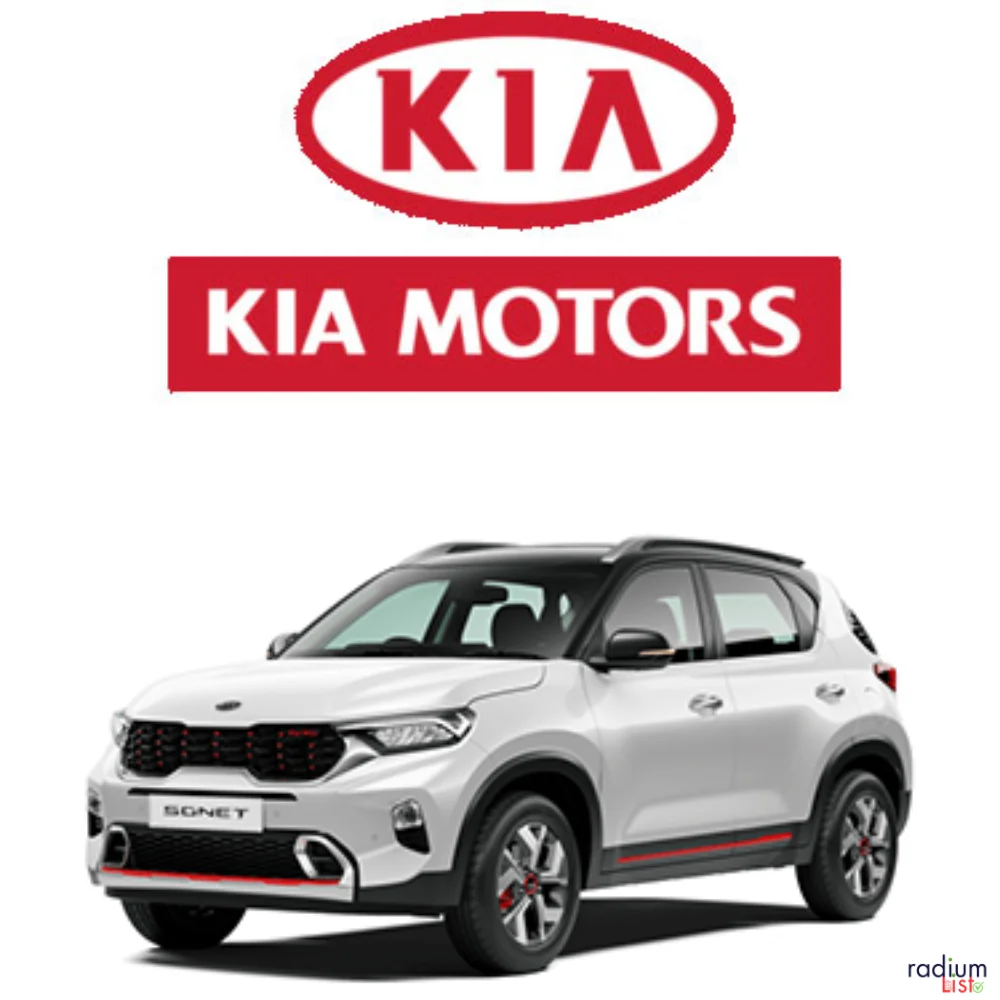Top 10 Automobile Companies in India
The Indian automobile industry is a dynamic and rapidly evolving sector that has witnessed tremendous growth over the years. With a population of over 1.3 billion people , India presents a Massive market for automobile Manufacturers
Top 10 Automobile Companies in India
Maruti Suzuki India Ltd
Maruti Suzuki is the leading Automobile Manufacturer in India ,known for its range of Affordable and popular cars. It holds a Significant market share and offers a diverse lineup of vehicles.
Here is a brief history of Maruti Suzuki India Ltd
Incorporation and Collaboration (1981): Maruti Suzuki India Ltd was Incorporated in February 1981 as a joint Venture between the Indian Government and Suzuki Motor Corporation ,a Japanese Automobile Manufacturer. The company’s Primary Objective was to produce affordable and fuel-efficient cars for the Indian market.
First Car and Market Penetration (1983): In December 1983 ,Maruti Suzuki launched its first car, the Maruti 800 ,a compact and economical vehicle that quickly gained popularity among Indian consumers. The car’s competitive pricing and reliability helped Maruti Suzuki establish a strong foothold in the Indian automotive market.
Expansion and New Models (1990s): During the 1990s ,Maruti Suzuki expanded its production capacity and introduced various new car models to cater to different market segments. Cars like the Maruti Zen ,Maruti Esteem ,and Maruti WagonR became well-received by consumers and contributed to the company’s growth.
Privatization and Market Leadership (2000s):In 2002 ,the Indian government decided to divest its stake in Maruti Suzuki ,leading to the company’s privatization. Suzuki Motor Corporation increased its shareholding ,making Maruti Suzuki a subsidiary. During this period ,Maruti Suzuki solidified its Position as the leading Automaker in India with a Significant market share.
Global Presence and Diversification (2010s): In the 2010s ,Maruti Suzuki continued to expand its presence in the Indian market while also making strides in the international arena. The company focused on innovation ,safety ,and sustainability while introducing new models and upgrading existing ones. Additionally ,Maruti Suzuki ventured into various segments, including compact SUVs, to cater to the evolving preferences of consumers.
Tata Motors
Tata Motors is a Well-Established Indian Automobile Company that Produces a Wide Range of Vehicles, Including Passenger cars ,Commercial Vehicles, and Electric vehicles. It is known for its Durable and Value-for-money Offerings.
Here is a brief history of Tata Motors
Foundation and Early Years (1945-1980):
Tata Engineering and Locomotive Co. Ltd. (TELCO) ,the previous name of Tata Motors ,was established in 1945. It was established as a collaboration between Tata Sons and Daimler-Benz AG. The company’s initial focus was on locomotive manufacturing. In 1954 ,Tata Motors produced its first commercial vehicle in collaboration with Mercedes-Benz. Over the next few decades ,Tata Motors expanded its presence in the Indian automobile market by manufacturing trucks ,buses ,and other commercial vehicles.
Indigenous Passenger Car Development (1980s):
In the 1980s ,Tata Motors began to work on developing an indigenous passenger car for the Indian market. This project led to the launch of Tata Sierra ,India’s first indigenously developed sports utility vehicle (SUV), in 1991. Although the Sierra faced limited success ,it laid the foundation for Tata Motors’ future endeavors in the passenger car segment.
Acquisition of Passenger Car Brands (2000s):
In the early 2000s, Tata Motors made significant strides in the passenger car market. In 2004 ,they acquired South Korean automaker Daewoo’s commercial vehicle division ,which gave them access to global markets and advanced technologies. However ,the most notable acquisition was that of Jaguar Land Rover (JLR) in 2008, a British luxury car Brand. This acquisition marked Tata Motors’ entry into the luxury car segment and significantly boosted its international presence..
Successes and Expansion (2010s):
The 2010s were a period of growth and expansion for Tata Motors. The company introduced several successful models, including the Tata Nano, touted as the world’s cheapest car. Despite initial hype, the Nano faced challenges in capturing the market due to various factors. Nevertheless, Tata Motors continued to focus on innovation and introduced successful models like the Tata Tiago, Tata Nexon, and Tata Harrier, which received positive responses from consumers and critics alike.
Transition to Electric Mobility (Recent Years):
In recent years, Tata Motors has been actively working on transitioning towards electric mobility. The company has launched electric variants of some of its popular models and has introduced new electric vehicles (EVs) like the Tata Tigor EV and the Tata Nexon EV. This strategic move aligns with the global trend towards sustainable and eco-friendly transportation solutions.
Mahindra & Mahindra Ltd
Mahindra & Mahindra is a Prominent Indian Automobile manufacturer Specializing in SUVs ,commercial vehicles ,and electric vehicles. It has a Strong Presence in the Indian market and is Known for its rugged and Versatile Vehicles.

Here is a brief history of Mahindra & Mahindra Ltd
Foundation and Establishment (1945):Mahindra & Mahindra Ltd was founded on October 2 ,1945 ,in Mumbai, India. It was established as a steel trading company by two brothers ,J.C. Mahindra and K.C. Mahindra ,along with their friend, Ghulam Mohammed. Initially, the company operated as a distributor of steel and other commodities.
Entering the Automotive Industry (1947):In 1947 ,just two years after its establishment ,Mahindra & Mahindra entered the automotive industry with the manufacturing of its first vehicle ,the iconic Mahindra CJ-2A. This rugged utility Vehicle was inspired by the American Jeep, and it played a significant role in India’s agricultural and rural development.
Diversification and Growth (1960s-1980s): During the 1960s and 1970s ,Mahindra & Mahindra continued to diversify its business portfolio. It expanded into various sectors ,including tractors ,construction equipment ,and agricultural machinery. The company’s agricultural division ,which introduced tractors like the Mahindra 475 DI ,became a major player in India’s agricultural sector.
International Expansion (1990s-2000s): In the 1990s and early 2000s, Mahindra & Mahindra made significant strides in expanding its international presence. It ventured into foreign markets by establishing joint ventures and partnerships. The company began exporting its vehicles and tractors to various countries, which helped it become a global player in the automotive and agriculture industries.
Diverse Business Conglomerate (Present): In recent years ,Mahindra & Mahindra has Evolved into a diversified business Conglomerate with Interests in various sectors ,including automotive ,farm equipment, aerospace ,information technology ,financial services ,and more. The company has been at the forefront of innovation and sustainable practices in its businesses ,making it one of the leading corporations in India.
Hyundai Motor India Ltd
Hyundai is a leading Global Automobile Manufacturer and has a Significant Presence in the Indian market. It offers a diverse range of Cars ,Including Hatchbacks ,Sedans ,and SUVs ,Known for their Quality and Features.
Here is a brief history of Hyundai Motor India Ltd
Establishment and Entry into India (1996): Hyundai Motor India Limited (HMIL) was incorporated in 1996 as a subsidiary of the South Korean automaker Hyundai Motor Company. The Company made its foray into the Indian market with the aim of tapping into the Growing Automobile demand in the Country.
First Manufacturing Plant (1998): In 1998, Hyundai established its first manufacturing plant in Sriperumbudur, near Chennai, Tamil Nadu. The state-of-the-art facility became the production base for various Hyundai models, including the Santro, which gained significant popularity in the Indian market.
Growth and Expansion (2000s): During the early 2000s, Hyundai Motor India witnessed substantial growth and success. The company introduced several successful models, such as the Hyundai Accent and Hyundai i10, which further strengthened its presence in India’s competitive automobile market.

Achievements and Milestones: Over the years ,HMIL achieved significant milestones and received numerous accolades for its contributions to the Indian automotive industry. The Company’s consistent Focus on Quality ,Innovation ,and Customer satisfaction played a Pivotal role in its Success.
Leading Automotive Manufacturer in India: As a result of its Continuous Efforts and Commitment to excellence ,Hyundai Motor India emerged as one of the leading automotive manufacturers in India. The company continued to launch new and updated models, expanding its product portfolio and reinforcing its position as a preferred choice among Indian car buyers
Honda Cars India Ltd
Honda Cars India is a Subsidiary of Honda Motor Company and Manufactures a Range of Popular Cars in India. It is known for its Fuel-Efficient vehicles ,Reliability ,& Innovative Technology.

Here is a brief history of Honda Cars India Ltd
Formation of Honda Cars India Ltd (HCIL) Honda Cars India Ltd was established in December 1995 as a joint venture between Honda Motor Co. Ltd, Japan, and Usha International, an Indian business group. The company’s formation marked Honda’s entry into the Indian automotive market.
Introduction of First Honda Car in India In 1998, HCIL introduced its first car model in India, the Honda City. The Honda City quickly gained popularity for its stylish design, reliable performance, and fuel efficiency. It became one of the leading choices in the mid-size sedan segment.
Expanding Product Portfolio Over the years, HCIL expanded its product lineup in India to cater to a broader range of customers. The company introduced various successful models, such as the Honda Civic, Honda Accord, and Honda Amaze, catering to different segments of the market.
Establishment of Manufacturing Facility In 2008, Honda Cars India Ltd established its manufacturing facility in Greater Noida, Uttar Pradesh. The plant started producing vehicles locally, helping the company to reduce costs and make their cars more competitive in the Indian market.
Focus on Localization and Growth In the following years, HCIL focused on increasing localization, which meant sourcing a higher percentage of components and parts from within India. This localization strategy not only contributed to cost-effectiveness but also helped the company meet the needs and preferences of Indian customers better. With a strong focus on customer satisfaction, HCIL continued to grow its market share and presence in India’s competitive automotive industry.
Toyota Kirloskar Motor Pvt Ltd
Toyota is a renowned automobile manufacturer Globally and has a Strong Presence in India. It is Known for its Reliable and high-quality vehicles ,with a focus on comfort ,safety ,and advanced features.
Here is a brief history of Toyota Kirloskar Motor Pvt Ltd
Establishment and Joint Venture (1997): Toyota Kirloskar Motor Pvt Ltd (TKM) was established in 1997 as a joint venture between Toyota Motor Corporation (TMC) of Japan and Kirloskar Group ,an Indian conglomerate. The Company was formed to Manufacture and sell Toyota vehicles in India, tapping into the growing Indian automotive market.
First Vehicle Rollout (1999): In 1999, TKM achieved a significant milestone by rolling out its first locally manufactured vehicle, the Toyota Qualis. The Qualis was well-received in the Indian market, contributing to TKM’s early success and setting the foundation for future growth.
Expanding Product Portfolio (2000s): Throughout the 2000s, TKM continued to expand its product portfolio by introducing various Toyota models tailored to the Indian market’s preferences and demands. Models like the Toyota Innova, Toyota Corolla, and Toyota Fortuner gained popularity and established Toyota as a reputable and reliable automotive brand in India.

Setting up Manufacturing Plants (2000s-2010s): To meet the increasing demand and local production requirements, TKM set up manufacturing plants in Bidadi, Karnataka, and later in 2010, added a second plant in the same location. These manufacturing facilities played a crucial role in enhancing production capabilities and supporting the “Make in India” initiative.
Focus on Sustainable Mobility (2010s): In line with Toyota’s global vision for sustainable mobility, TKM also emphasized the introduction of hybrid and electric vehicles in India during the 2010s. The company aimed to contribute to the reduction of environmental impact and promote cleaner transportation solutions for the Indian market.
Ford India Pvt Ltd
Ford India is a Subsidiary of Ford Motor Company and Manufactures cars for the Indian market. It offers a range of vehicles known for their performance ,safety features ,& Innovative Technology.

Here is a brief history of Ford India Pvt Ltd
Founding -Ford India Pvt Ltd was established as a Wholly-owned subsidiary of Ford Motor Company ,one of the world’s leading automobile manufacturers, in the year [insert founding year]. The company’s primary objective was to enter and expand its presence in the Indian automotive market.
Manufacturing Facilities – In the early years, Ford India set up its first manufacturing facility in [insert location], India. This facility became the hub for producing a wide range of vehicles to cater to the diverse needs of Indian customers.
Product Launches and Expansion – Over the years, Ford India launched several successful models tailored to the Indian market’s preferences. These included compact cars, sedans, SUVs, and other commercial vehicles. The company also expanded its dealership network to reach customers across different regions in India.
Collaboration and Partnerships – To strengthen its position in the competitive Indian automotive market, Ford India collaborated with local suppliers and partners. These strategic alliances helped the company enhance its manufacturing capabilities, supply chain efficiency, and after-sales service.
Innovation and Technology – Ford India continuously focused on innovation and technology advancements. It introduced cutting-edge features and safety technologies in its vehicles, gaining recognition for its commitment to providing high-quality products to Indian consumers.
Renault India Pvt Ltd
Renault is a French Automobile manufacturer with a significant presence in the Indian market. It offers a Range of Cars Known for their Stylish design ,features ,& competitive pricing.

Here’s a brief history of Renault India Pvt Ltd
Entry into the Indian Market (2005): Renault made its Entry into the Indian Market in 2005 by forming a joint Venture with Mahindra & Mahindra ,one of India’s leading automotive companies. The Joint venture was named Mahindra Renault Pvt Ltd and aimed to manufacture and sell Renault-branded vehicles in India.
Solo Operations as Renault India Pvt Ltd (2010):In 2010 ,Renault decided to end its joint Venture with Mahindra & Mahindra and Established its Wholly-owned subsidiary ,Renault India Pvt Ltd. This move allowed Renault to have full control over its operations in India and pave the way for future expansion.
Launch of Key Models (2011-2015): After becoming a standalone entity, Renault focused on launching various models tailored to the Indian market. Notable launches during this period included the Renault Duster compact SUV in 2012 and the Renault Kwid in 2015. The Kwid, in particular, gained immense popularity for its affordable pricing and appealing features.
Expansion and Manufacturing Facilities (2015-2017):To strengthen its presence in India ,Renault invested in expanding its manufacturing facilities in the country. In 2015, the company inaugurated its state-of-the-art manufacturing plant in Chennai ,Tamil Nadu. The facility has played a crucial role in producing vehicles for both domestic sales and exports.
Product Portfolio Growth and Market Position (2018-present): Over the years, Renault continued to expand its product portfolio in India ,introducing new models and facelifts to cater to different customer segments. While facing stiff competition from other automakers in the Indian market, Renault aimed to strengthen its market position and enhance its brand presence through strategic marketing and product offerings.
Volkswagen India Pvt Ltd
Volkswagen is a German Automobile manufacturer Known for its Quality and Performance-Oriented Vehicles. It has a Presence in the Indian market with a diverse range of cars ,including Hatchbacks ,sedans ,& SUVs.
Here is a brief history of Volkswagen India Pvt Ltd
Entry into the Indian Market (2001): Volkswagen officially entered the Indian market in 2001 by establishing Volkswagen India Pvt Ltd as a wholly-owned subsidiary of Volkswagen AG Mthe German automotive giant. The company set up its headquarters in Pune ,Maharashtra.
Joint Venture with Skoda Auto (2002):In 2002 ,Volkswagen formed a joint venture with Skoda Auto ,another Volkswagen Group brand, to manufacture and market vehicles in India. This joint venture marked a significant step in expanding their presence in the rapidly growing Indian automotive market.

Volkswagen Plant in Chakan (2009): In 2009, Volkswagen India inaugurated its manufacturing plant in Chakan, near Pune. This state-of-the-art facility was equipped with modern technology and had the capacity to produce a wide range of Volkswagen and Skoda vehicles for the Indian market.
Expansion and Launch of New Models (2010s): Throughout the 2010s, Volkswagen India expanded its product portfolio and launched several popular models tailored to suit Indian preferences. Some of the successful models introduced during this period include the Volkswagen Polo, Volkswagen Vento, and the Skoda Rapid.
Emission Scandal and Recovery (2015 – present): In 2015, Volkswagen faced a major setback globally due to the “dieselgate” emission scandal, which involved manipulating emissions tests on some of their diesel vehicles. This scandal also impacted Volkswagen’s image in India. However, the company took measures to recover from the setback and continued to introduce new models with improved technology and customer-centric strategies.
Kia Motors India Pvt Ltd
Kia Motors is a South Korean Automobile Manufacturer that entered the Indian market in recent years. It Offers a Range of feature-Packed & stylish Cars ,Gaining Popularity for its Value-for-Money offerings.

Here is a brief history of Kia Motors India Pvt Ltd
Establishment and Entry into India (2007):Kia Motors India Pvt Ltd is a Subsidiary of Kia Motors Corporation ,a South Korean Automobile Manufacturer. In 2007 ,Kia began its operations in India ,setting up its headquarters in Gurugram ,Haryana ,with the aim of tapping into the rapidly growing Indian automotive market.
Announcement of Manufacturing Plant (2017):In 2017 ,Kia made a significant announcement regarding its investment in India. The company Revealed plans to build a state-of-the-art manufacturing plant in Anantapur ,Andhra Pradesh ,with an initial investment of approximately $1.1 billion. This marked Kia’s commitment to establishing a strong presence in India.
Inauguration of Plant and Launch of First Model (2019): In July 2019 ,Kia Motors India inaugurated its manufacturing facility in Anantapur. The plant has a production capacity of around 300,000 units per year. Soon after ,in August 2019 ,Kia launched its first model for the Indian market, the Kia Seltos ,a compact SUV. The Seltos received a positive response from Indian consumers and became a popular choice in its segment.
Expansion of Product Portfolio (2020-2021): Following the success of the Seltos, Kia continued to expand its product lineup in India. In early 2020, the company launched the Kia Carnival, a premium MPV (Multi-Purpose Vehicle), targeting a different segment of the market. Kia also introduced updated variants and special editions of existing models to cater to various customer preferences.
Growth and Recognition (2022-present): Over the years ,Kia Motors India Pvt Ltd has witnessed steady growth and established itself as a key player in the Indian automotive industry. The company’s focus on quality ,design, and customer satisfaction has garnered positive reviews and accolades. With continuous efforts to innovate and introduce new models, Kia remains committed to strengthening its position in the competitive Indian automobile market.
